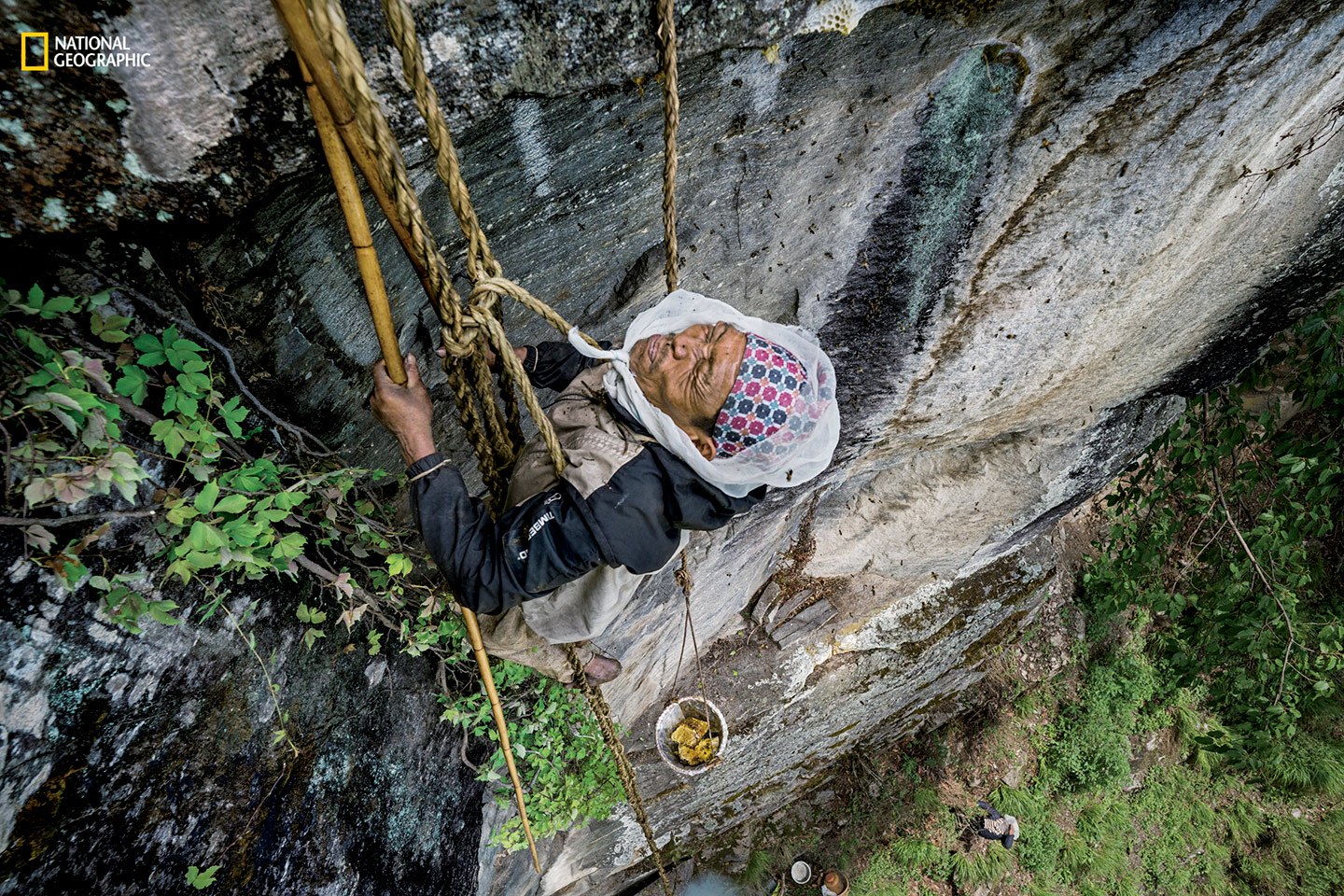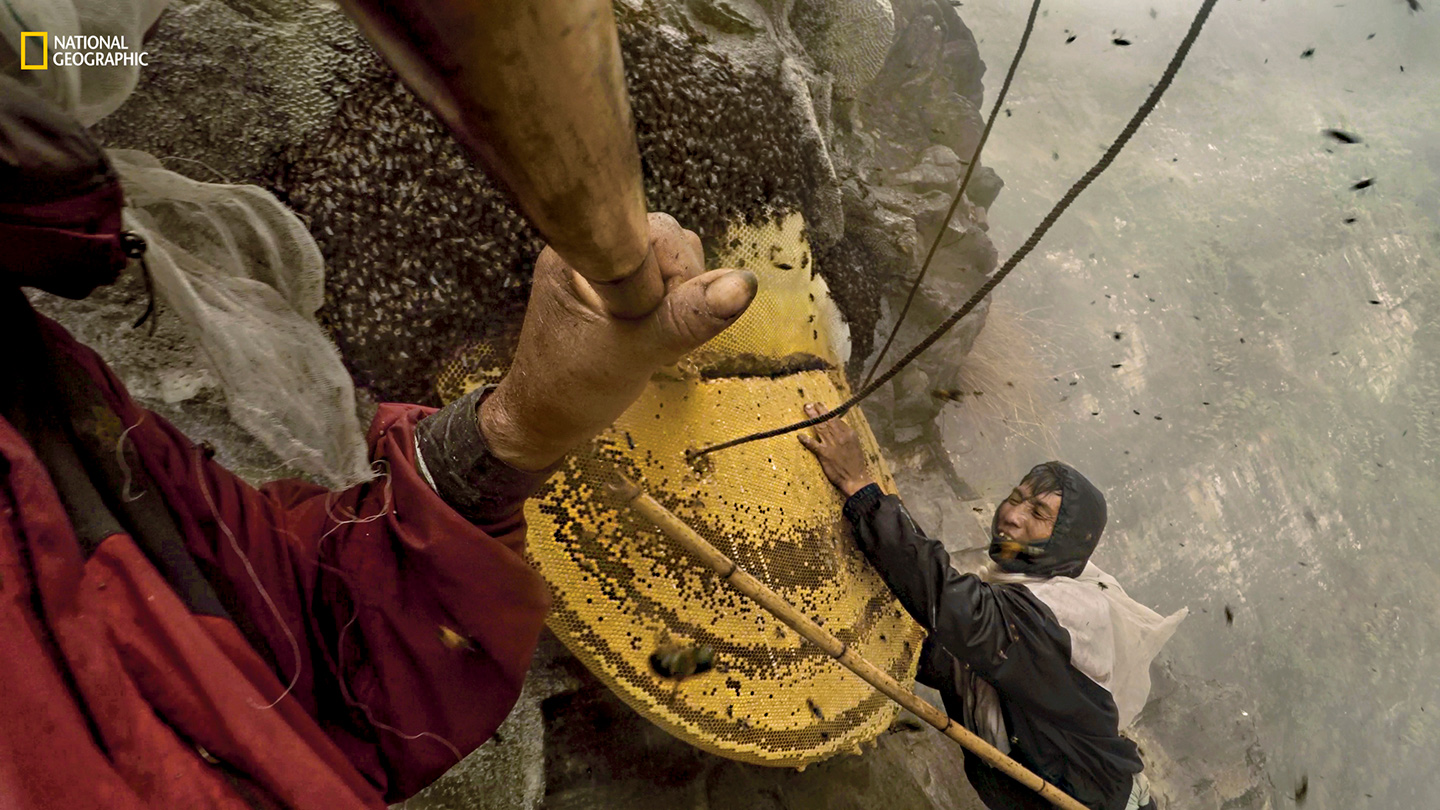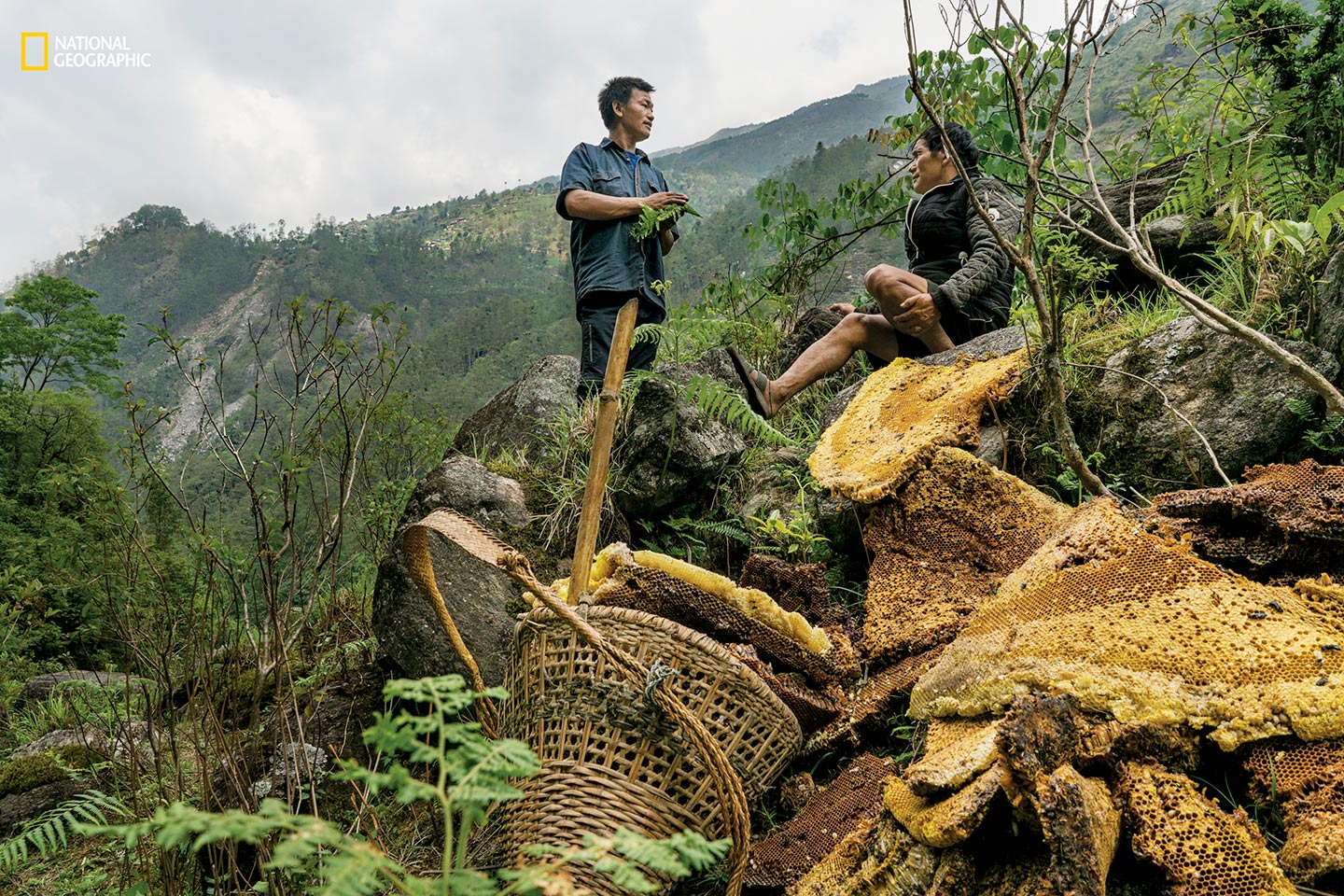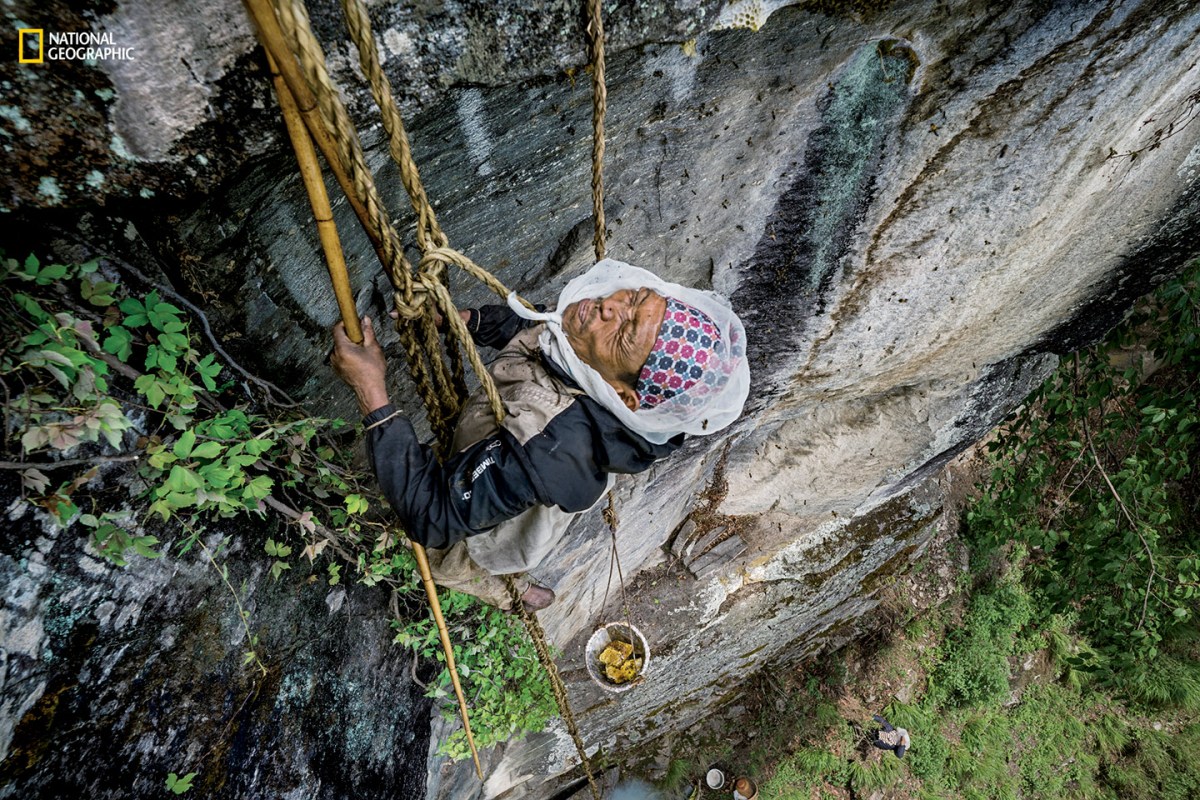Would you climb 3oo feet up in the air and climb into a hive of the world’s largest honeybees? Meet the man, Mauli Dhan, does this for a living.
As explained in the July issue of National Geographic, honey hunting is the only way that Mauli, 57, can earn cash for the few staples he cannot produce himself. He uses a bamboo rope ladder to get to the hive, where the bees guard gallons of sticky, reddish fluid known as “mad honey.” It sells on the Asian black market for $60 to $80 a pound thanks to its hallucinogenic properties.

But it is a dangerous task. Mauli’s arms get tired and bees sting him all over his body as he holds on to the small rock ledge. The closer to the hive he gets, the more dangerous it becomes. He’s not always tethered to a safety rope either, which means one misstep could end up being fatal.
As he climbs he murmurs a Kulung mantra: “You are Rangkemi. You are of the bee spirits. We are not thieves. We are not bandits. We are with our ancestors. Please fly. Please leave.” This is meant to appease the bees and spirits that live in the cliff.

The Kulung people have remained separate from the outside world for centuries, thanks to the dense jungle surrounding their home by the Hongu River in Nepal. But as National Geographic explains, the outside world is getting closer. There is a dirt road within a couple days march of the village now. A politician is talking about building an airport in the area. You can get cell reception even in the jungle.
Mauli first assisted his father with a honey harvest when he was 15. That night, he had a dream that set him on his path. That was 42 years ago. Now, he’s tired and doesn’t want to do the honey harvest anymore. But, as he explained to National Geographic, he is poor “and no one else will do it.”
The July issue of National Geographic magazine includes breath-taking videos along with the full piece. The story delves into the intersection of technology, culture, and poverty and looks at the history of honey-hunters. The online version is filled with images and videos, you can experience it for yourself now.



This article was featured in the InsideHook newsletter. Sign up now.
























